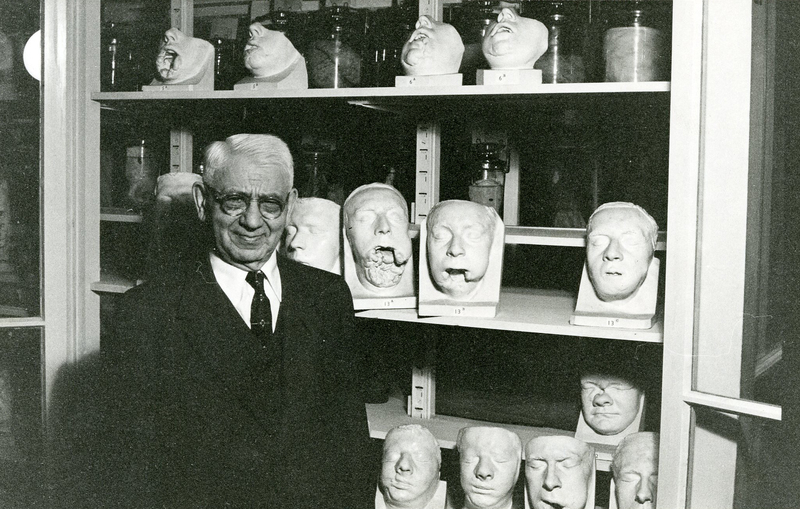--And Restoration?
Although it prospered until the 1930s, despite difficult financial times, the Dental Museum became a casualty of the growth and changing nature of dental education at Harvard. In the 1940s, the Dental School itself was remade into the Harvard School of Dental Medicine, and greater emphasis was laid on research rather than mechanical dentistry and its associated technical skills.
Space was at a premium in the Longwood Avenue building, and the need for the historical instruments and displays of pathological specimens gave way to the more pressing need for laboratories, lecture rooms, and space for modern dental research. The rich collections of the Museum were placed in storage or dispersed. According to James Morse Dunning, describing changes made to the 188 Longwood Avenue building at the opening of the School of Dental Medicine, in 1941:
Museums and lunch-rooms went out, prosthetic laboratory space was reduced; research laboratories, and class-rooms came in…. The front end of the second floor saw David Weisberger installed in his own research laboratory where the museum had formerly been. Kazanjian's World War I maxillo-facial models were now in a case in a basement hallway. Keep's Parkman-Webster models were packed away and labeled, but a good deal of other exhibit material had disappeared forever.
In 1999, as part of the renovation of the Countway building, responsibility for the specimens of the Warren Anatomical Museum devolved upon the library staff. During the course of a survey of the Warren holdings, a number of skulls, specimens, and other artifacts from the Dental Museum came to light. The minutes of the Administrative Board record the transfer of the exhibit of skulls in the Dental Museum to the Department of Anatomy of the Medical School in 1940, and these specimens were probably among the ones found in the Warren collection. The Kazanjian collection of moulages and case records of facial reconstruction work had also been housed in the Warren Museum at some point, but then later transferred to the Countway and are preserved along with the manuscripts and correspondence of Dr. Kazanjian in the collections at the Center for the History of Medicine. Some instruments and relics, including the George Parkman casts, along with the existing catalogs and accession records of the Museum, have been held in the Countway Library, and probably were transferred along with the holdings of the library of the School of Dental Medicine in 1968. A few of these specimens are currently on display in the Harvard Dental Center.
The specimens and instruments in this exhibit are all drawn from the identified surviving collection of the Dental Museum. Despite all we know about the collection from its catalogs and other records, so much of the collection has, over the years, unfortunately, been lost—like the mastodon tusk, the current whereabouts of which remains a mystery—that even a partial restoration or recreation of the Museum is not possible. All that remains is a tantalizing glimpse of this "lost" museum and its holdings.

